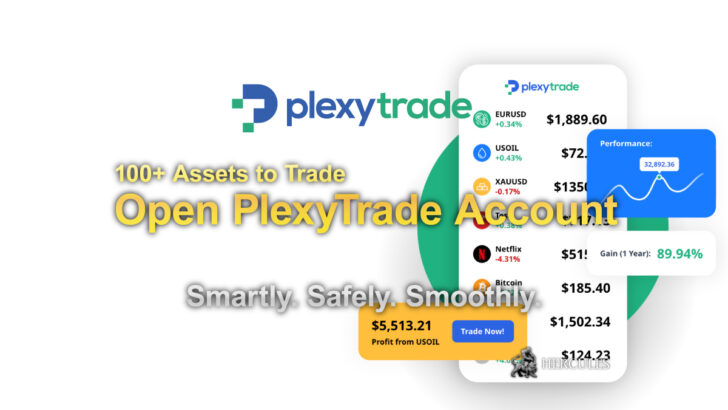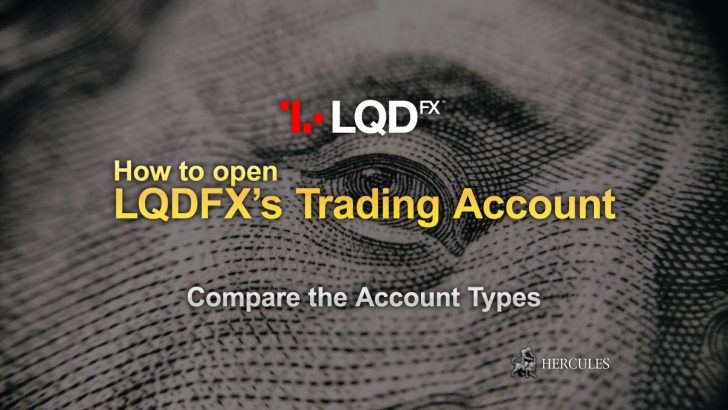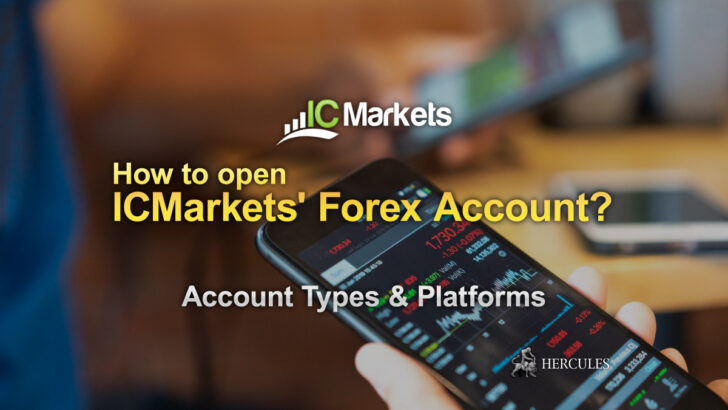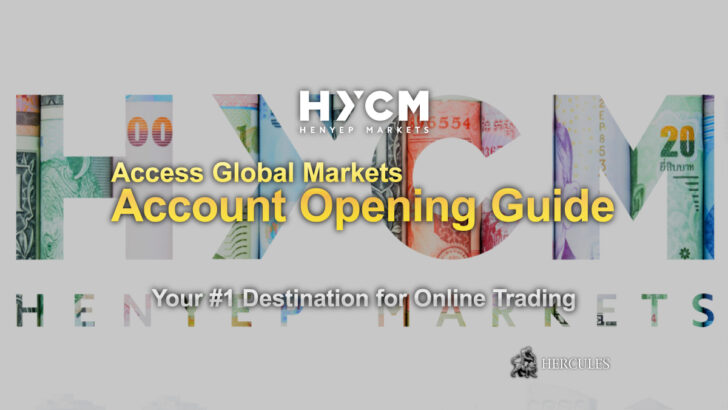How to open Tickmill FX trading account? What markets are available for trading?
Open Tickmill's trading account and start trading various financial markets including FX, Bonds, Metals, Oils, and Stock Indices.
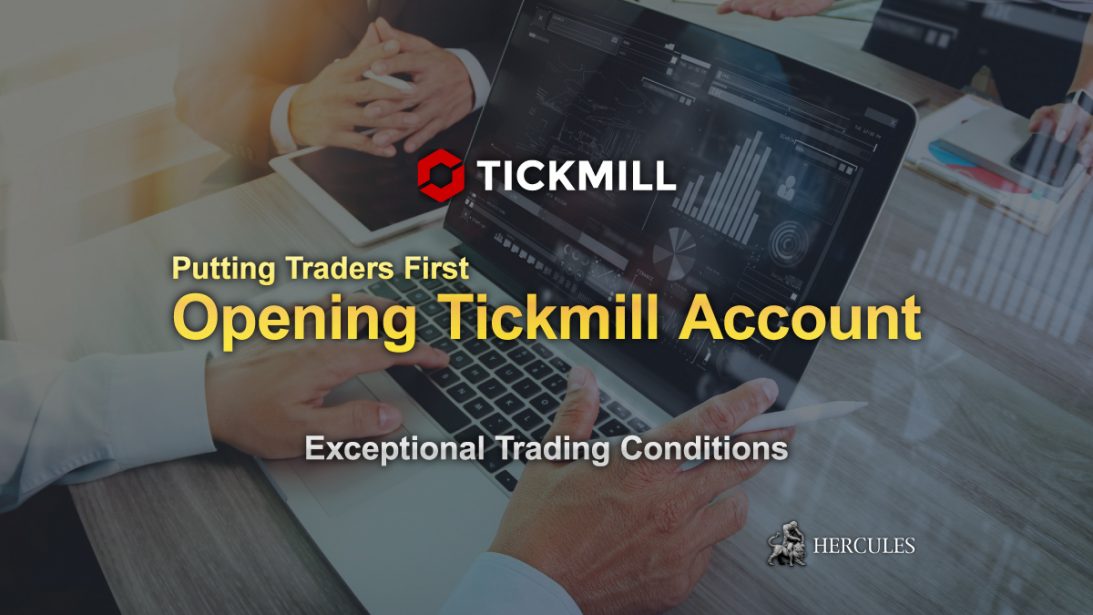

Open Tickmill’s FX and CFD Account for free
- Click here to go to Tickmill’s Official Website;
- Go to the account opening page;
- Submit the application form;
- Receive login information via email from Tickmill;
- Log in to Tickmill’s client portal;
- Make a deposit, download MT4 platform, and start trading.
Open Tickmill’s account for free
Available markets for trading on Tickmill
By opening one trading account with Tickmill, you can invest in various financial markets altogether.
See the available financial markets and their characteristics below.
Go to Tickmill’s Official Website
1. Foreign exchange
Enter the world’s largest market and trade more than 60 currency pairs.
Foreign exchange (Forex for short) is a market where you can exchange one currency for another. When you “sell” a currency, buyers will buy that currency elsewhere. Nowadays, the exchange rate between these two currencies is very important in foreign exchange transactions. The exchange rate fluctuates constantly, and it is these fluctuations that allow market speculators to profit from trading.
The daily trading volume of the foreign exchange market amounts to 6.5 trillion U.S. dollars, which is huge in itself! In contrast, the daily trading volume of the New York Stock Exchange (NYSE) is only $22.4 billion, which pales in comparison.
The huge scale of the foreign exchange market has attracted a variety of participants, including central banks, investment managers, hedge funds, companies, brokers, and retail traders. 90% of the market participants are currency speculators!
Tickmill aims to help all traders succeed by providing an excellent trading experience.
- Spreads from 0.0 pips.
- More than 60 currency pairs are available.
- The average execution speed is 0.20 seconds.
- All trading strategies can be used.
- The maximum leverage ratio is 1:500.
The value of each currency depends on its supply and demand and therefore determines the “exchange rate” between the two currencies, which will continue to fluctuate. The exchange rate itself is basically the difference between one currency and another.
It is this exchange rate that determines the amount of money you exchange for another currency, such as how many pounds you exchange for euros.
Now, when you trade foreign exchange, you are trading currency pairs. So the transaction will involve two different currencies, and you will speculate on the value between them.
There are 4 separate trading sessions: Sydney, Tokyo, London, and New York.
Therefore, you have 5 days a week, 24 hours a day to trade (the weekend market is closed).
Start Trading Forex with Tickmill
2. Stock Index and Crude Oil
Get global stock indexes and crude oil under exclusive trading conditions.
A stock index is a group of stocks that can be bought or sold as a single trading tool. Now, some traders speculate on how the prices of individual assets will change, and some choose to speculate on stock indexes. As a whole, stock indexes can be used to indicate the health of an industry or even a country.
However, the classification of stock indexes is more complicated. Some indexes, such as DAX 30, are a collection of the 30 best-performing companies in Germany. It is listed as a “national stock index”, indicating the health of the German stock market.
However, the stock index does not only include stocks combined due to geographic location. Some stock indexes represent and track the performance of certain sectors of the market. For example, the Nasdaq 100 Index tracks the performance of all companies listed on the Nasdaq Stock Exchange. Usually technology-related companies, so Nasdaq (Nasdaq) shows the health of the US technology industry!
Tickmill’s goal is to provide an excellent trading experience to help traders succeed
- Low spreads.
- Obtain more than 14 types of indices.
- The average operating speed is 0.20 seconds.
- All trading strategies can be used.
- The leverage is as high as 1:100.
Since the stock index is composed of a group of companies, there are many factors that affect the price of the index. Simply put, if the value of the stocks that make up the index rises, then the price of the index will rise, and vice versa.
Traders who use stock indexes to make predictions can determine whether the value of the index increases or decreases based on market sentiment.
The price movement of the index may be more stable than other financial instruments because a stock cannot bring a huge price surge. However, stock indexes also have significant volatility because they can reflect a wide range of political and economic changes.
Since stock indexes are composed of stocks traded on a global scale, their trading hours are variable.
Start Trading Stock Indices and Oils with Tickmill
3. Precious metals
Use the world-famous MT4 platform to trade gold and silver.
Precious metals such as gold and silver are tradable instruments, which are classified as commodities, so their prices are relatively uniform all over the world.
Traders tend to use precious metals as “safe haven” assets. These assets will be easier to trade when economic development and political turmoil lead to increased volatility in other markets. After all, when unfavorable market conditions are caused by war, economic recession, government debt problems, etc., gold will maintain its value, while stocks and currencies are prone to major losses.
The limited supply of gold and silver means that its value is higher. Gold is usually used as the main safe-haven asset, while silver is usually used mainly for industrial production. Therefore, it is more susceptible to price fluctuations caused by changes in business conditions.
Tickmill aims to help all traders succeed by providing an excellent trading experience.
- The spread from 0.0 pips.
- Can be used for gold & silver cross exchange rates.
- Average execution speed of 0.20 seconds.
- All trading strategies can be used.
- Maximum leverage 1:500.
Trading precious metals do not require you to buy or sell physical products. Just like you do with other financial derivatives, you only need to infer the price changes.
However, the price drivers of precious metals are opposite to those of other types of financial instruments. After political turmoil or war, the value of stocks and shares will fall, and there will be a large amount of investment in precious metals, which will drive their prices up.
The factors that usually affect the price of precious metals include supply and demand, national and global economic trends, inflation, dollar strength, interest rates, government policies, technology, and so on.
You have 5 days a week, 24 hours a day to trade gold and silver.
Start Trading Precious Metals with Tickmill
4. Bond
Use a robust platform with primary trading conditions for bond trading.
Simply put, a bond is an agreement between the borrower and the lender, and the borrower finances the project by issuing bonds. Bonds, also called government bonds or securities, are generally issued by the government. The issuer of the bond, or the borrower’s, sets the interest rate to pay the investor. Then return the investors’ initial investment to them after the bond matures.
And stock different, bond trading is no central trading system. The bond market is an over-the-counter market, much larger than the stock market! Please also be aware that as a trader, you are not directly buying or selling bonds. You are just speculating on how the bonds will increase or depreciate over time.
Tickmill’s goal is to help all traders succeed by providing a unique trading experience.
- Spreads from 0.0 pips.
- Can trade German bonds.
- 0.20 seconds average execution speed.
- Support all trading strategies.
- Maximum leverage 1:100.
Bond prices are affected by changing market factors and economic conditions. The most influential price drivers are interest rates, yields, and bond ratings. However, understanding the relationship between bond prices and external factors is more complicated.
Let us use interest rates as an example:
due to inflation, the government decided to raise interest rates. When this happens, the bond interest rate increases, which means that the yield or the amount returned to investors, will decrease. This will in turn lead to lower bond prices because it is worthless for the original investor.
If a trader speculates that interest rates will increase sharply, they will sell the bond, anticipating that the price will fall. In the above example, the trader made a profit!
Start Trading Bond with Tickmill
Conditions of Spreads and overnight interest
Understand the costs associated with your transaction.
When you start trading, you will find that you get a “bid” price (“sell price”) and an “ask” price (buy price). “Bid” refers to the price at which the base currency is sold, and “ask” refers to the price at which the base currency is bought. The difference between these two prices is what we call the spread.
When starting a transaction, there is always a third party that facilitates the beginning and end of the transaction (such as a bank or liquidity provider). These third parties must ensure the orderly flow of buying and selling orders, which means they must find a buyer for each seller and vice versa.
The third party also bears the risk of loss while facilitating the transaction, so the third party will keep a part of each transaction-the reserved part is called the spread!
The spread itself is measured by “points”, which is the smallest unit of currency pair price changes. Therefore, the spread in the example below is 0.2 pips.
Find out more about Spread of Tickmill
How to calculate the transaction cost?
To calculate the cost of the transaction itself, you need to calculate the spread and pip value, and multiply it by the number of lots you are trading:
Transaction cost = spread × transaction size × pip value
For example: a transaction you made is <1.2 pip spread> . In this example, the
The point value is 1 USD, so the transaction cost is 1.2 USD.
The larger your transaction volume, the higher the transaction cost.
Use Tickmill’s online calcualtor
Swap Points (Overnight Interest Rate) on positions
Quite simply, interest is a kind of overnight interest, and traders must pay this interest to hold an open position overnight. When a trader wants to continue to hold an open position, he will pay the interest of the currency sold and charge the interest of the currency bought. Therefore, regardless of whether the trader holds a long position or a short position, or the current market conditions, the interest is based on the interest rate of the country involved in the currency pair.
- The interest rate is applicable at 00:00 platform time.
- Each currency pair has its interest expense, and the measurement standard size is 1 lot (100,000 basic units).
- Interest will be applied to your open position every night, and when the position remains open, it will be applied to the new “value date”. However, on Wednesday night, the value date of transactions with open positions changed to Monday. Therefore, the interest charge is 3 times the interest rate.
- Check your interest in the MT4 market report panel. You just need to right-click, select “Symbols”, select Tools, and then select “Properties”.
Check out the current Swap Poits
Conditions of Leverage and Margin
Define how you trade with Tickmill.
Once you start trading, you need to master the two most basic concepts that are the use of leverage and margin, how leverage determines the required margin.
One of the main attractions of foreign exchange trading is leverage and margin. It allows you to open and maintain larger positions with a small amount of funds. For example, if you want to open a EURUSD transaction worth 100,000 USD, you don’t have to have 100,000 USD in your account!
Trade with up to 1:500 leverage on Tickmill MT4
What is Leverage?
In theory, leverage means that a trader has a large amount of disposable funds while using a small amount of his own funds. They can borrow the remaining money from the broker.
For example, if you use a leverage ratio of 1:100 to trade and you have $1,000 in your account, then you have $100,000 to trade. Although this sounds like a great opportunity, you must always remember that it is a double-edged sword.
When you trade with a larger amount, due to leverage, you can open a larger position and possibly get a larger profit. However, the larger your position, the higher the risk and the greater the possibility of loss.
Find out more about Tickmill’s Leverage
What is Margin?
It might be easier to understand if you think of margin as a deposit for transactions that you want to open and maintain. The broker you are trading with will keep part of the balance of your deposit to make up for potential losses in the transaction. Once you close the position, the margin will be re-deposited into your account.
The margin required for a transaction is usually expressed as a percentage of the entire transaction, called the “margin requirement”. Every trade you open will have a margin requirement, depending on the trading tool and trading broker you choose.
Find out more about Tickmill’s Margin
How to calculate the required margin?
The margin will be a percentage of the size of the transaction you want to open, calculated based on the base currency of the currency pair you want to trade. Using the equation below, you can calculate how much margin is required for each transaction.
Required Margin = Position Size X Margin
For example, if you want to open a mini-lot (10,000 basic unit) USD/JPY transaction, how much margin is required to open a position?
Since the US dollar is the base currency, the position (or nominal value) is 10,000 US dollars. Your broker will require you to pay a 5% deposit.

